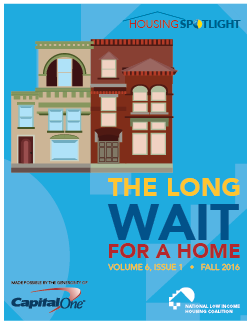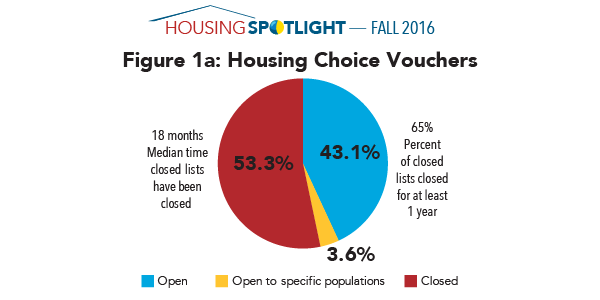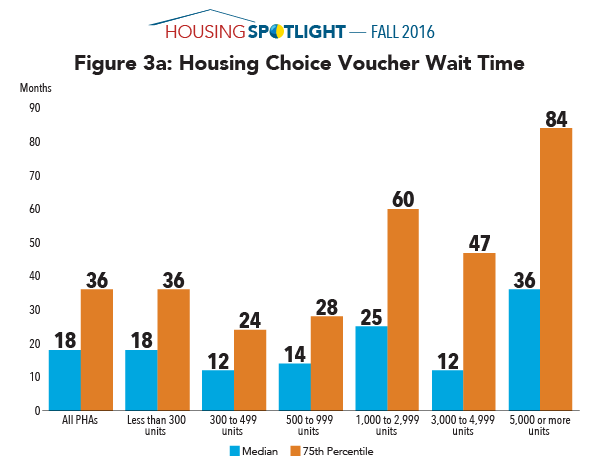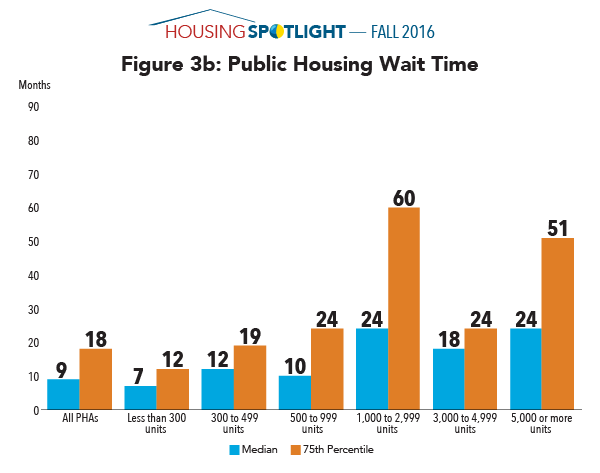Housing Spotlight | Volume 6, Issue 1
Oct 11, 2016

Now Available! Housing Spotlight: The Long Wait for a Home
 Report Downloads
Report Downloads
To view these download them to your computer and open them in Adobe Acrobat. If you don't have Adobe Acrobat you can download it here.
NLIHC's new report Housing Spotlight: The Long Wait for a Home about Housing Choice Vouchers (HCVs) and Public Housing waiting lists. An NLIHC survey of Public Housing Agencies (PHAs) indicated that 53% of HCV waiting lists were closed to new applicants and another 4% were open only to specific populations, such as homeless individuals and families, veterans, persons with a disability, or local residents. Sixty-five percent of closed HCV waiting lists had been closed for at least one year, more than half did not think the list would reopen within the next year, and wait times for HCVs often spanned years. The findings make clear that we must expand housing resources for our nation’s lowest income renters.
HCV waiting lists had a median wait time of 1.5 years for housing assistance. Twenty-five percent had a wait of at least 3 years. Twenty-five percent of the largest PHAs (5,000+ vouchers and public housing units combined) with HCV waiting lists had a wait time of at least 7 years. The average HCV waiting list consisted of 2,013 households. Public Housing waiting lists had a median wait time of 9 months. Twenty-five percent of them had a wait time of at least 1.5 years. Public Housing waiting lists had an average size of 834 households.
Extremely low income (ELI) households, whose incomes are at or below 30% of the area median income, accounted for 74% of households on the average HCV waiting list and 67% of households on the average Public Housing waiting list.
Legislation introduced in the 114th Congress to expand funding for vouchers, public housing, and other housing programs for ELI households should be reintroduced and passed in the new Congress next year. The bills include the “Pathways out of Poverty Act” (H.R. 2721) and the “Common Sense Housing Investment Act” (H.R. 1662), which propose modest changes to the mortgage interest deduction to provide additional funds for both vouchers and public housing, as well as the national Housing Trust Fund; the “Ending Homelessness Act of 2016” (H.R. 4888) which would increase funding for vouchers; and the “Affordable Housing Credit Improvement Act” (S. 3237), which would better target the Low Income Housing Tax Credit program to ELI renters.
Three hundred and twenty PHAs completed NLIHC’s survey about the status, size, waiting times, and household composition of their waiting lists. The participating PHAs were diverse in size, metropolitan status, and location.
Graphics from the Report:


